Politics of Waste
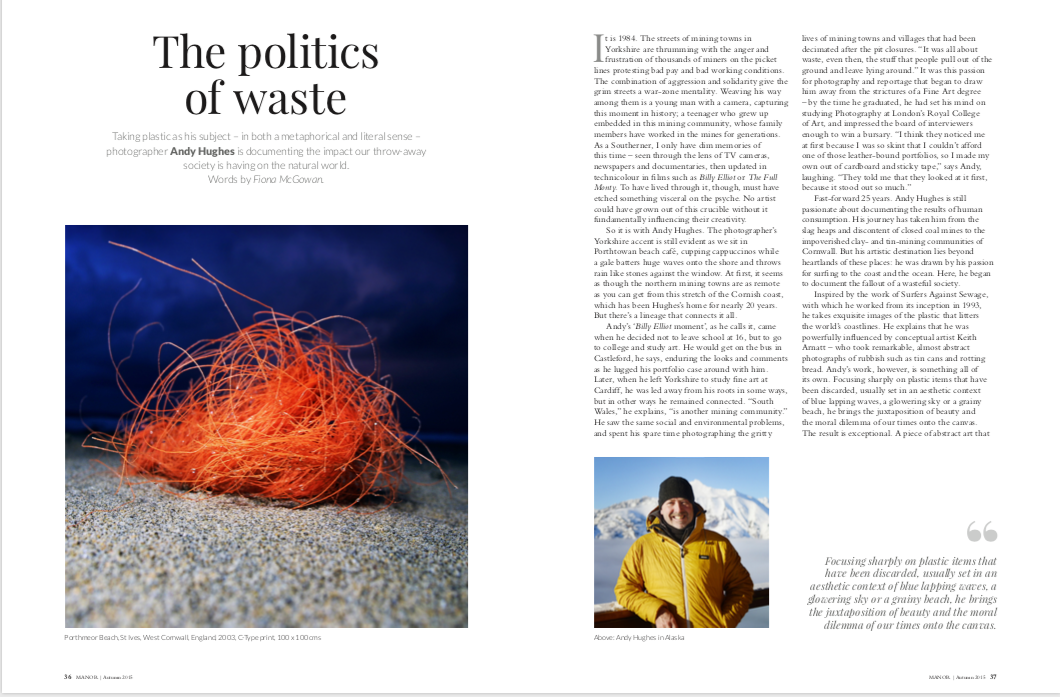
It is 1984. The streets of mining towns in Yorkshire are thrumming with the anger and frustration of thousands of miners on the picket lines protesting bad pay and bad working conditions. The combination of aggression and solidarity give the grim streets a war-zone mentality. Weaving his way among them is a young man with a camera, capturing this moment in history; a teenager who grew up embedded in this mining community, whose family members have worked in the mines for generations.
As a Southerner, I only have dim memories of this time – seen through the lens of TV cameras, newspapers and documentaries, then updated in technicolour in films such as Billy Elliot or The Full Monty. To have lived through it, though, must have etched something visceral on the psyche. No artist could have grown out of this crucible without it fundamentally influencing their creativity.
So it is with Andy Hughes. The photographer’s Yorkshire accent is still evident as we sit in Porthtowan beach café, supping cappuccinos while a gale batters huge waves onto the shore and throws rain like stones against the window. At first, it seems as though the northern mining towns are as remote as you can get from this stretch of the Cornish coast, which has been Hughes’s home for nearly 20 years. But there’s a lineage that connects it all.
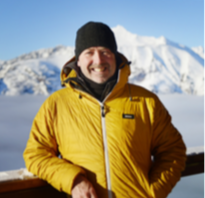
Andy’s ‘Billy Elliot moment’, as he calls it, came when he decided not to leave school at 16, but to go to college and study art. He would get on the bus in Castleford, he says, enduring the looks and comments as he lugged his portfolio case around with him. Later, when he left Yorkshire to study fine art at Cardiff, he was led away from his roots in some ways, but in other ways he remained connected. “South Wales,” he explains, “is another mining community.”
He saw the same social and environmental problems, and spent his spare time photographing the gritty lives of mining towns and villages that had been decimated after the pit closures. “It was all about waste, even then, the stuff that people pull out of the ground and leave lying around.” It was this passion for photography and reportage that began to draw him away from the strictures of a Fine Art degree – by the time he graduated, he had set his mind on studying Photography at London’s Royal College of Art, and impressed the board of interviewers enough to win a bursary. “I think they noticed me at first because I was so skint that I couldn’t afford one of those leather-bound portfolios, so I made my own out of cardboard and sticky tape,” says Andy, laughing. “They told me that they looked at it first, because it stood out so much.”
Fast-forward 25 years. Andy Hughes is still passionate about documenting the results of human consumption. His journey has taken him from the slag heaps and discontent of closed coal mines to the impoverished clay- and tin-mining communities of Cornwall. But his artistic destination lies beyond heartlands of these places: he was drawn by his passion for surfing to the coast and the ocean. Here, he began to document the fallout of a wasteful society.
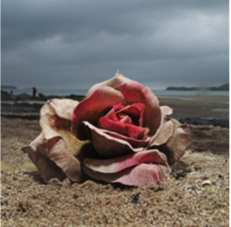
Inspired by the work of Surfers Against Sewage, with which he worked from its inception in 1993, he takes exquisite images of the plastic that litters the world’s coastlines. He explains that he was powerfully influenced by conceptual artist Keith Arnatt – who took remarkable, almost abstract photographs of rubbish such as tin cans and rotting bread. Andy’s work, however, is something all of
its own. Focusing sharply on plastic items that have been discarded, usually set in an aesthetic context of blue lapping waves, a glowering sky or a grainy beach, he brings the juxtaposition of beauty and the moral dilemma of our times onto the canvas. The result is exceptional. A piece of abstract art that carries a deep message about the crisis of our throw- away culture and the damage it is doing to the life in our oceans. In 2010, he produced a book, Dominant Wave Theory, which showcased images of flotsam
and detritus from beaches around the world, and featured essays by leading environmental activists and advocates including Chris Hines of Surfers Against Sewage, marine biologist Dr Richard Thompson and environmental author Lena Lencek. Designed by renowned graphic designer David Carson, the book is an artwork in itself and received critical acclaim around the world.
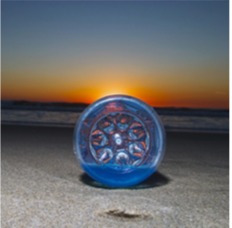
In 2013, Andy Hughes was invited to join a small number of artists, scientists and educators in an expedition to the wilderness of Alaska. What he found in Anchorage surprised him. “It’s a very young population, and there is a real enterprising spirit. People are coming up with all sorts of surprising businesses – like a guy who makes glasses frames out of wood.” In Alaska, they’re marketing the incredible growth in small businesses as ‘the modern-day gold rush’.
But outside of the vibrant, eco-friendly city, the story is not so positive. In the remote seas, the team were shocked to discover the amount of plastic waste and marine debris that littered the vast, seemingly untouched landscape. They carried out a huge clean- up of Hallo Bay in Katmai National Park, where debris from the Japanese tsunami in 2011 has washed ashore, damaging ecosystems and killing wildlife. Andy’s images from this expedition are currently part of a major exhibition in LA (‘Gyre – The Plastic Ocean’ is at USC Fisher Museum until 14 November 2015).
It was while he was in Alaska that he also had a close encounter with a grizzly bear and her three cubs. It was to affect him deeply. “I sometimes suffer from anxiety,” he says, “but when I think of the moment when a grizzly was a few metres away from me, and we had no way of defending ourselves... nothing else can ever terrify me like that.” The moment was so intense that Andy and some of the other crew members burst into tears after the bear and her cubs walked away. “It’s about respect. We’re guests in their home,” Andy says. And it is our trash, the shadow of our physical presence, that is encroaching on that home.
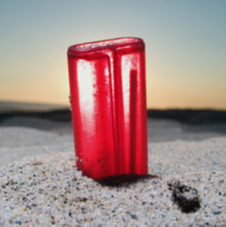
Of course, the burning question is, ‘what can be done?’ Highlighting the problem is, of course, vital – and using art is a powerful way of communicating the urgency of the need to change. Andy’s reportage- style zine, shot this year at Glastonbury, shows a sickening amount of plastic waste carpeting the festival grounds. It’s clear that the younger generation has no more understanding of waste than the ‘use- it-and-chuck-it’ generation that embraced the plastic revolution of the 80s, 90s and Noughties.
“The main problem is single-use plastics,” says Andy. “The way that people drink from a bottle and throw it away. There need to be incentives to take bottles back – perhaps reverse vending machines that give you money back when you return your bottles. The Somersault festival [in Somerset] had a great idea: the organisers gave money back on every used plastic cup that was returned. There were whole families collecting huge towers of cups – and there was hardly any waste after the festival.”
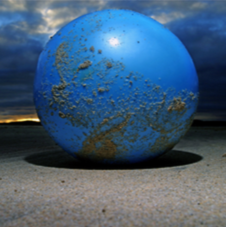
He points to a culture that insists on plastic water bottles in corporate meetings. “What’s wrong with a jug and glasses of water?” he asks. Andy is certainly not going to sit quietly – from teaching photography to students at Truro college to working on an advertising campaign for a major eco corporation and getting involved with grassroots campaigns around the world, he uses his artistic lens to push for society to change its attitude to waste.
